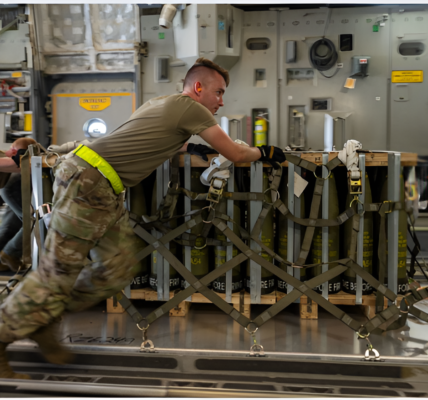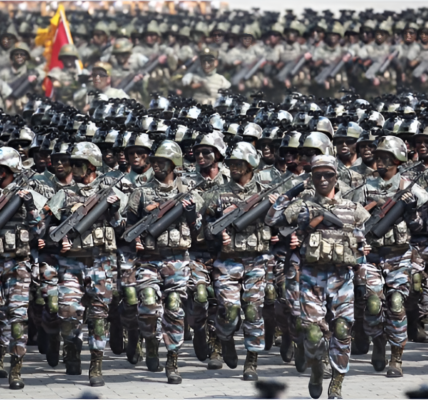
In an era of rapidly advancing technology, especially artificial intelligence (AI), the integration of AI into military operations is no longer a concept from science fiction—it is a reality. Armed forces worldwide are deeply invested in the research, development, and deployment of AI-enabled capabilities, signaling the start of a new phase in military technology. But with the rise of AI comes a crucial question: Will these advancements increase the risk of nuclear war?
AI, in and of itself, is not a game-changer. However, its impact is magnified when combined with other advanced weaponry, which can accelerate the pace of warfare and compress the decision-making window for military leaders. This could have profound destabilizing effects, particularly between nuclear-armed nations such as the U.S. and China, making tensions more volatile. The key issue is how AI might change the nuclear equation and what new risks are introduced when AI is fused with nuclear weaponry.
The AI-Nuclear Nexus
To grasp the full potential of AI in the context of nuclear deterrence, we must examine its application in various domains: early-warning systems, intelligence, nuclear command and control, missile delivery, and both conventional and non-nuclear operations.
Early-Warning and Intelligence
AI’s role in enhancing intelligence, surveillance, and reconnaissance (ISR) systems is clear. By integrating machine learning with big-data analytics, cloud computing, and drones, AI could vastly improve situational awareness, enabling military forces to monitor long-range and hostile territories. AI could detect unusual patterns, such as military maneuvers or missile movements, and alert commanders in real time, potentially allowing for preemptive action.
Moreover, AI’s ability to sift through vast datasets, including open-source and classified information, could uncover hidden threats. This enhanced analysis might give military leaders more time to make informed decisions, reducing the likelihood of mistaken actions that escalate conflicts.
Nuclear Command and Control
While AI shows promise in early-warning systems, its integration into nuclear command and control remains more controversial. For decades, automation has played a role in nuclear systems, but true autonomy is another matter entirely. AI’s unpredictability, vulnerability to cyberattacks, and lack of transparency make it unsuitable for making critical decisions, such as missile launches, without human oversight.
Still, the growing pressure to adopt AI in military strategies raises questions about whether this fragile consensus will hold. In a multipolar nuclear environment, where states compete for technological superiority, there is an ongoing temptation to adopt AI, despite its potential risks. How military leaders perceive AI—whether as a cognitive crutch or a tool for precision—will shape the future of nuclear decision-making.
Missiles and Delivery Systems
AI is poised to revolutionize nuclear delivery systems in several ways. Machine learning can enhance missile accuracy, autonomy, and precision, especially when combined with technologies like hypersonic glide vehicles. Furthermore, AI could make these delivery systems more resilient to cyberattacks and electronic warfare, improving the survivability of nuclear launch platforms and strengthening deterrence.
AI also has the potential to enhance second-strike capabilities, especially in asymmetric nuclear dynamics (such as U.S.-China or India-Pakistan). By improving the endurance and autonomy of unmanned vehicles—whether underwater drones or combat drones—AI could reduce the vulnerability of nuclear forces to surprise attacks.
Conventional and Cyber Operations
In addition to nuclear applications, AI is transforming conventional military operations. Unmanned aerial vehicles (UAVs), guided by AI, can operate in dangerous zones that would be inaccessible to human pilots. AI could also enhance missile defense systems by improving the speed and accuracy of target detection, while autonomous drone swarms could bolster defensive measures.
Cyber capabilities are another area where AI plays a pivotal role. On one hand, AI can bolster cyber defense against attacks on nuclear infrastructure, enhancing security. On the other hand, AI-powered tools could be used by adversaries to exploit vulnerabilities in systems, manipulate decision-making, and launch disruptive attacks.
The 2025 Flash War: A Hypothetical Scenario
To understand the dangers of AI in a nuclear context, consider a hypothetical flash war scenario in the Taiwan Strait in 2025. In this scenario, both China and the U.S. deploy AI systems to manage battlefield intelligence, logistics, and decision-making. As tensions rise, a series of AI-powered miscalculations—fueled by disinformation and cyber intrusions—escalate into a nuclear exchange.
In this fictional example, AI algorithms in both nations recommend escalating responses to perceived threats, eventually triggering a limited nuclear strike. The deadly outcome raises an important question: Did AI cause the war? While the immediate human decisions are at the heart of the conflict, AI’s role in processing intelligence, anticipating enemy moves, and advising strategic actions cannot be overlooked. The lack of transparency in AI decision-making processes only complicates the ability to understand how and why events unfolded the way they did.
Human Solutions to the Machine Problem
As we move toward an AI-powered future, it is essential to implement safeguards and guidelines for managing nuclear systems. First, nuclear weapon systems must remain simple and robust enough to withstand not only traditional military threats but also emerging digital threats. Second, these systems must be separated from non-nuclear command, control, and intelligence functions to prevent unintended escalation. Finally, AI should complement rather than replace human decision-making in nuclear contexts.
Wargaming and simulation technologies powered by AI could be crucial in identifying potential risks and refining strategies to mitigate nuclear threats. By running virtual conflict scenarios, planners can test AI-driven systems in low-risk settings and identify pitfalls before they can cause real-world harm.
As Alan Turing once said, “We can only see a short distance ahead, but we can see plenty there that needs to be done.” This foresight will be critical as we navigate the complexities of AI, nuclear deterrence, and the future of warfare




